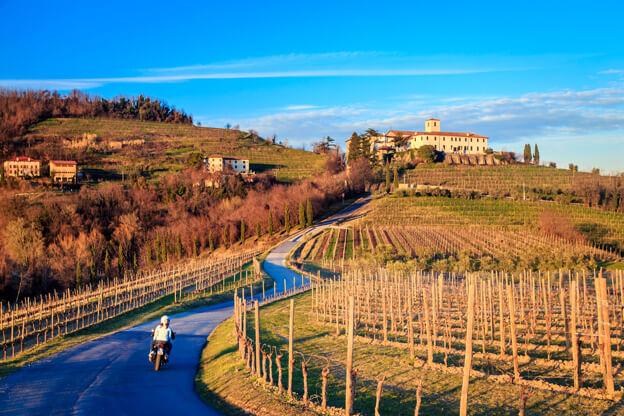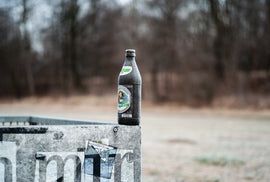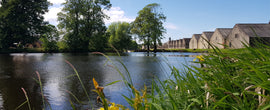Friuli - Venezia Giulia
While no wine region - even the actual islands - is a metaphorical island, there are some that have developed in relative isolation. Italy, with its long history of global engagement through trade, travel and conflict, is not one of them. The international influence on Italian viticulture has been profound, from the Germanic varietals of Alto Adige to the Mediterranean sweep of Sicily and Sardigna, to the mass cultivation of international grapes for the world market. Nowhere is this clearer than in Friuli - Venezia Giulia, the hyphenated region occupying Italy’s far northwestern corner. Bordering Austria to north, Slovenia to the east, Veneto to the west and facing the Adriatic Sea to the south, Friuli - Venezia Giulia (henceforth abbreviated as Friuli) is the hinge that connects Italian peninsula with the Eastern Europe and Asia; since antiquity, it has been a highly contested crossroads of cultures, languages, religions and ethnicities. Most of the region was part of the Austro-Hungarian empire from the early 19th century until the end of the First World War in 1918, after which it was folded into Italy. Following World War II, the Istrian peninsula and the Carso plateau became part of Yugoslavia. The city of Trieste, historically one of Europe’s most important ports (and a great place to recall other places in exacting detail apparently - James Joyce completed Dubliners and Portrait of the Artist.. and began Ulysses whilst a resident) was declared a “Free Territory”, and divided into two zones to be administered by The United States-England and Yugoslavia, respectively. It did not become a part of Italy until 1954. Friuli-Venezia Giulia, as an Italian wine region, as it is currently constructed, only came into being in 1963.
Today, Friuli displays its complex provenance more proudly and easily than any time in recent history; Slavic and Germanic influences on the culture and cuisine co-exist with and complement the Italian and Mediterranean ones, local dialects are still spoken, and all of it gets reflected in the wine. Fruilian terroir is appropriately diverse, with the landscape characterized by coastal flatlands, mountains and plateaus. There are 11 DOC and 3 DOCG’s in the region, with most of the vineyards located in the southern half, including the large wine regions of Collio Goriziano, Colli Orientali del Friuli, Isonzo, and the Slovenian border straddling Carso-Kras, one of the world’s few bi-national appellations. Friulian white wines have historically overshadowed the reds (though this is changing somewhat) and there are over 30 different varietals under vine, from local specialties like Friulano, Ribolla Gialla, Picolit, Refosco, Schioppettino and Pignolo to a host of internationally famous grapes that receive distinctly Friulian renderings.
Last time we visited Friuli, we focused on the latter, featuring Cabernet Franc and a skin contact Pinot Grigio. This trip, for our end of year bottlings, we have two of the aforementioned local varietals. The red is 100% Schioppettino [ski’OH--pet--TEE--noh], an indigenous grape with a delightfully picaresque history to match its onomatopoeic moniker (an elaboration of its ancient name, “Scopp”, meant to mimic the crunch of its berries or to the fact that its high acidity once provoked malolactic fermentation in the bottle, making the cap to pop off.) Also known as Ribolla Nera, it is old - believed to be from the commune of Prepotto, where records of its use as wedding wine date back to 1282 - and was nigh-extinct as recently as the mid-70s, before an unlikely revival, sparked by a (seemingly unnecessary?) local provision against planting the grape, resulted in a renaissance. The “Save Schioppettino” movement saw the varietal go from pariah to parish priest - it is now the recommended grape in the Udine province - and it’s easy to see why. Hardly grown anywhere else, Schioppettino does not travel well and is high-maintenance (thin-skinned and late ripening) even at home, but the rewards of a well crafted bottle are pretty self-evident: vivid herbal-spice aromas, followed by a surprisingly full-bodied palate with great acidity and wild berry flavors framed by lush tannins. Ronco Severo, one of my favorite producers (you may remember their skin-contact Pinot Grigio from the previous Friuli club) makes one of the best I’ve ever had.
The story of the white is, if anything, more complicated. For thousands of years, the Friulano grape was known as Tocai Friulano. Then in 2007, after a multi-decade fight, the European Court of Justice of Luxembourg ruled, pursuant to a 1993 agreement between the European Union and Hungary, that commercial use of the word “Tocai”, and all its cognates, must in Europe be restricted to Hungary and its famous “Tokaji'' wines from the village of the same name. Which is very confusing, for not only is there no Friulano grape or relative thereof in the Hungarian wines, none of the 6 grapes allowed in wines that say Tokay/Tokai/Toccai/Tocai/Tokaj on the label. You can go down a very, very extensive rabbit hole searching for the origins of Friulano, but the current conclusion seems to be originally from France, where it was called “Sauvigonaisse” (meaning “Sauvignon-like”, as it was frequently planted alongside Sauvignon Blanc vines) and one of the parent grapes of Chenin Blanc. Brought to Friuli following the phylloxera epidemic in the late 1800s, it took wing and is now, in the words of President of the Italian Academy of Vine and Wine Antonio Calo “a noble vine, forgotten in France: cared for, disseminated and understood by us.” (For anyone interested, there is much, much, more here: https://medium.com/vintager/mysterious-origins-of-the-italian-wine-formerly-known-as-tocai-28069b06aba7.)
Jancis Robinson has referred to the wines of Friuli - Venezia Giulia as “in a way…foreign to Italians”. I think their cosmopolitan origins are a great opportunity to expand our conceptions of Italian wine - and make sure we don’t miss the proverbial vineyard for the vines. They are also unique and delicious. Hope you enjoy them and Happy Holidays!
|
Genio Savorgnano Fruilano 2022 |
|
|
Region: Colli Orientali del Friuli, Friuli, Italy |
About the Winemaker: According to Giovanni Genio, his interest in wine started when he was 5 years old, when he ran in the vineyards to see his father and uncle during harvest. In 2006 he decided to recover his grandfather’s old vineyards, located in Savorgnano del Torre, in the middle of the Friuli region. Using his knowledge from Viticulture and Oenology in the City of Cividale del Friuli, he worked the vineyards back to life. He maintained a philosophy to respect the land and thus maintains a low emission of carbon dioxide on his vineyard, and he practices organic growing techniques. About the Winemaking: The bunches are gently pressed and after 25 days of fermentation (1/3 in oak barriques and 2/3 in stainless steel tanks), it ages for 9 months on the lees. An additional 2-3 months in the bottle before distribution. Tasting Notes: Pale straw yellow color with greenish hints. Strong and round taste, with characteristic notes of almonds, chamomile and wildflowers. Slightly lower acidity than the other whites in the range. |
|
Winemaker: Giovanni Genio |
|
|
Price per bottle / per case $30.99/$334.70 |
|
|
Suggested Food Pairing: prosciutto-wrapped asparagus topped with a poached egg, a cheese plate, spaghetti alle vongole, or roast chicken with rice pilaf. |
|
|
Ronco Severo Schioppettino 2019 |
|
|
Region: Venezia Giulia IGT |
About the Winemaker: Stefano Novello grew up in the vineyards. Part of an old farmers’ family, his grandfather and uncles bought a rundown estate just after the Second World War with the desire to invest in the vineyards in Prepotto, a small village that sits by the Slovenian border in the province of Udine. Stefano’s philosophy is well represented by the label on his wine bottles: a kid in balance on the top rail of a chair. It means to be adventurous -- take challenges and riskswhen pursuing your dreams. Stefano is part of that movement called Vini Veri (True Wines). These are winemakers and viticulturists, mostlyfrom this part of Italy, that approach wine making with an almost religious predisposition. The Association, born in 2004, requires the associate to follow strict rules: no herbicides or pesticides used in the vineyards, no GMO vines, only re-rooting from a pre-existent plant; no vitamins or other chemical ingredients in the cellar, only native yeasts, no filtration or clarification of the wines, and many other restrictions. This what classifies a natural wine, well beyond the organic concept. Those vignaioli (winegrowers) are searching for the best harmony between the land and man without compromises. What we get is a wine that does truly represent this legacy between the territory and who makes it. Stefano grows four white varietals (Pinot Grigio, Ribolla Gialla, Friulano and Picolit) and three reds (Refosco dal peduncolo rosso, Schioppettino and Merlot). The vineyards are on the hillside around 500ft above sea level on calcareous soil. About the Winemaking: Also known as Ribolla Nera, records of this grape being used for winemaking in the Friuli region go back the the 13th century. Fermented using only native yeasts, this wine is then aged for up to three years in small oak cooperage and bottled unfined and unfiltered. Tasting Notes: With a color of intense ruby red with purple highlights, this wine shows delicate herbal, forest notes in the nose with penetrating raspberry and blackberry fruit. Tannins are moderate and ripe striking a perfect balance with the bright fruit and making this a beautiful versatile food wine. |
|
Winemaker: Stefano Novello |
|
|
Price per bottle / per case: $52.99/$572.30 |
|
|
Suggested Food Pairing: Local dishes like corn polenta w/ (without) salami; Duck breast with black pepper but also everything from burgeres to roast pork to curries to Margherita Pizza. Very versatile. Can pair with pasta as well, but when in Friuli it’s best to go with gnocchi (see recipe below.) |
|
Instructions:
1. Roast the potatoes for 40-50 minutes, or until just done. If they cook too long, they will not rice properly.
2. Let the potatoes cool for a few minutes. As soon as you can handle them (you can use a kitchen towel to protect your hand from the heat) cut each potato in half and scoop out the flesh. Place it in the ricer and rice into a large bowl or directly onto the counter.
3. Add the flour and the salt and mix well. Add the egg, and quickly knead everything together into a sticky dough, working as quickly as possible. The secret to tender, light gnocchi is 1) add as little flour as possible and 2) knead as little as possible.
4. Fill a small pan with water and bring to a boil. You will use this to test the texture of your gnocchi. Take a small piece of dough, about the size of a strawberry, and drop it into the boiling water. It will cook for about a minute, and then should rise to the surface. Let it cook for one more minute, then remove it from the water. If, rather than sink and then rise, it breaks apart, add a bit more flour to the dough and knead again. Once you get a test one that sinks and then rises without blowing apart, you are ready to move on to the next step. You should have a test gnocchi that is cooked through, but still soft and light.
5. Dust the counter with flour. Divide the dough into between 4 and 5 equally sized pieces. Take one of the pieces and place it on the floured countertop. Using the palms of your hands, roll the piece out into a 1/2 inch thick log, which will be about 18 inches long. Cut the log into 1-inch lengths, and place the individual gnocchi onto a sheet pan that has been dusted with flour. Repeat with the remaining pieces of dough.
6. Heat the cream over medium heat in a large saute pan to just a simmer. Add the grated cheese and stir gently while everything melts. Turn off the heat.
Fill a large pot with water, bring to a boil and season with salt. Add the gnocchi to the boiling water in small batches. Once they have risen to the top, allow them to cook for one more minute, then scoop them out with a slotted spoon and add to the saute pan with the cheese.
7. When all the gnocchi has been cooked, add the poppy seeds and speck. Turn on the heat to medium, and stir to heat through. Serve immediately.





